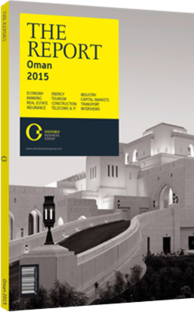Electricity generation
Two Omani electricity generation companies – Al Batinah and Al Suwadi – opened their initial public offerings (IPOs) in May 2014. Al Batinah offered 236m shares at a price of OR0.128 ($0.33), totalling OR30m ($77.7m), while Al Suwadi offered 250m shares at a price of OR0.13 ($0.34) per share, for a total of OR32m ($82.9m). Both offered to sell 35% stakes to the public in order to comply with Omani regulations (power plants that are majority owned by foreign investors must conduct IPOs within five years of starting operations). At the IPO price, both companies offered an attractive dividend yield of around 8%, against an average of 6.5% for other power companies in Oman. The IPOs were very successful, with both heavily oversubscribed. The two offers received a combined subscription of OR668m ($1.73bn), which was more than 10 times the original combined offer. The success of the two IPOs underscores the high demand for reliable, dividend-yielding stocks in Oman. Their stable and predictable cash flows are underpinned by long-term power purchase agreements (PPAs) with the government of Oman. The PPAs have a lifespan of around 15 years and are renegotiated at the end of the lease agreements. There is healthy demand for these stocks from institutional investors, such as Omani pension funds. GCC institutions also take interest in such IPOs due to higher dividends and predictable cash flows. The executive vice-president of the Capital Market Authority credited the market’s appetite for IPOs with the success of the listings. He also noted that the liquidity in the market can be used to finance Oman’s economic projects. Following the IPOs, shares were listed in June 2014. The stocks rallied higher with the listing of heavy volumes, as the share price of Al Suwadi shot up by 25% to OR0.162 ($0.42) on listing day, while Al Batinah rose by 26% to OR0.161 ($0.42). In the wake of listing day, Al Suwadi continued to climb, reaching a high of OR0.189 ($0.49) in August, while Al Batinah hit OR0.187 ($0.48). Prior to the IPO, both companies were owned by a consortium comprised of GDF Suez (46%); Multitech, part of Suhail Bahwan Group (22%); Sojitz Corporation and Shikoku Electric Power Company (with 11% each); and the Public Authority for Social Insurance (10%). The two power companies were commissioned as part of the government’s proposal to develop Oman’s eighth and ninth independent power plants at Barka and Sohar. Following a competitive bidding process in 2009-10, the companies’ founders were awarded contracts to build. Al Suwadi was formed to operate in Barka 3, while Al Batinah was formed to operate in Sohar 2.
The plants are both coastal, gas-fired, combined-cycle, gas turbine plants, with a capacity of 744 MW each. They currently contribute a significant proportion of Oman’s total main interconnected system capacity. Together, they add around 1500 MW of power to Oman’s capacity of 4500 MW. The projects are structured as build-own-operate schemes and were built in September 2010 by a consortium of Germany’s Siemens and Korea’s GS Engineering and Construction.
In the first nine months of 2014 the Al Batinah plant operated well, with 99.9% reliability. The plant produced 2897 GWh, 36% more than the year before, as commercial operations began in mid-2013. Al Suwadi reported similar results. Both companies expect the plants to continue to perform well, with financial results for 2014 forecast to be in-line with expectations.
Oman Power and Water Procurement (OPWP) is the single buyer of power and water for all independent power producers and independent water and power projects in Oman, and is therefore the only buyer of electricity produced by the two companies. According to OPWP, peak demand is expected to grow from 5239 MW in 2014 to 8106 MW by 2019, at an average rate of 9.5% per year – an outlook that bodes well for Al Batinah and Al Suwadi. The PPA with OPWP ends in 2028, with both companies able to extend their PPAs or sell output in a more liberalised market, depending on market regulations at the time. In either case, both companies are expected to play a crucial role in meeting the growing, long-tern power requirements of Oman.
You have reached the limit of premium articles you can view for free.
Choose from the options below to purchase print or digital editions of our Reports. You can also purchase a website subscription giving you unlimited access to all of our Reports online for 12 months.
If you have already purchased this Report or have a website subscription, please login to continue.

